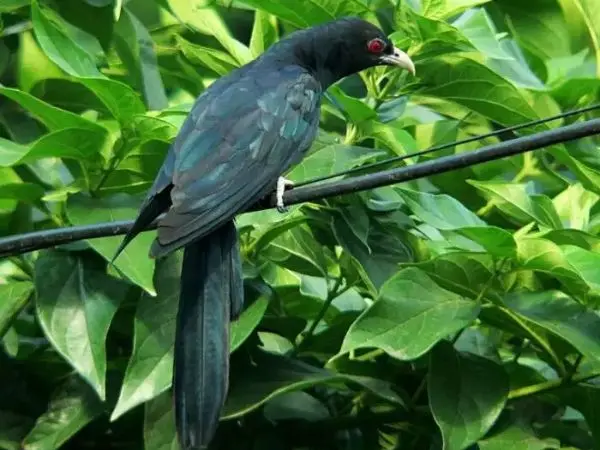
April 14 was celebrated as the start of the new year by several culture regions of India. This day is celebrated as:
-
Puttandu in Tamil Nadu
-
Vishu in Kerala (Southern India)
-
Noboborsho in Bengal
-
Maha Vishuva Sankranti in Orissa (Eastern India)
-
Baisakhi in Punjab
-
Bishu in Himachal Pradesh
-
Baishakhi in the Mithila region of Bihar (Northern India)
-
Bihu in Assam (Northeastern India)
Although India is a country of sub-continental proportions with mind-boggling diversity, one of the many unifying cultural forces is still the centrality of the agricultural cycle and the rhythms of nature in the lives of the people. One major harvest has just been brought in, and another agricultural cycle is set to begin, in what is hoped-for as an unceasing cycle of prosperity. The sun has reached its peak, and and will remain so for the next two months; summer is now entrenched across the subcontinent.
The Asian Koel: Herald of the Summer Season
In the northern Indian plains, no creature of nature announces this seasonal change more eloquently than the Asian Koel, known as the Indian nightingale. Its lilting call is inseparably linked to the season, signaling:
-
The onset of dry, stifling heat
-
The gradual browning of the earth
-
The growing anticipation of life-giving monsoon rains
As the Koel waits out the summer heat, its musical notes get more and more persistent, intense and haunting almost as if its heart (and throat) would break were it to have to wait any longer for the rains. Its song has become a metaphor in north Indian classical and folk poetry and music for all that is beautiful, yet heartbreaking, about love and longing.
A Special Sighting at Savista
This year, on April 14, right at dawn, we heard the Koel’s first call of the season. Later that morning, we heard its clear notes again—this time from just outside the haveli. Perched on the highest branch of the nearly bare Karanji tree, which had just begun sprouting new leaves, was the singer itself.
For once, the elusive Koel was fully visible, unaware that it was being observed. We marveled at its:
-
Glistening jet-black feathers
-
Bright red, glowing eyes
-
Large body and long tail
-
Throat muscles vibrating with every trill
Such a rare and amazing sight, given that Koels are among the shyest birds we have, whose natural instinct is to hide themselves. All through the summer they will sing from dawn to dusk, from behind a camouflage of thick foliage. And they will fall completely silent the moment the rains arrive, to be heard again only at the start of next year’s summer.
Conclusion
At Savista, the song of the Koel transcends mere birdsong; it embodies the essence of the season, resonating with nature’s rhythms and the eternal cycle of yearning and renewal. As the sun shines brightly and the land prepares for the full heat of summer, the koel’s enchanting melody becomes a familiar presence in our lives—its tune a reminder of beauty, strength, and the hope of impending rains. Just as April heralds the start of new agricultural and cultural journeys across India, this enchanting sighting serves as a reminder that nature, too, rejoices in its own heartfelt manner.

